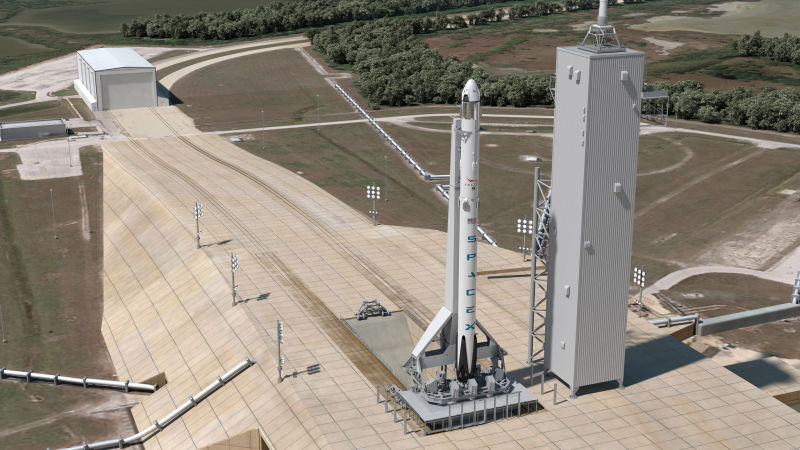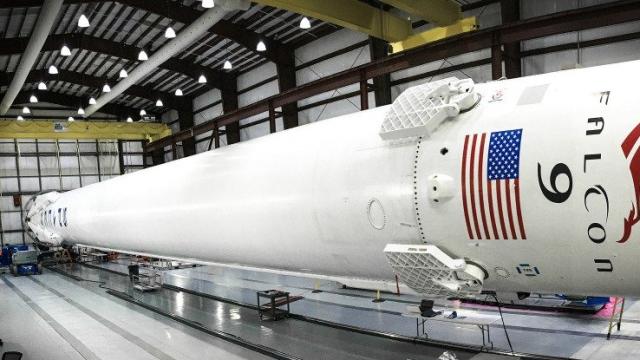Six months after a rocket exploded in June, SpaceX is on the verge of taking to the sky again — with a souped up Falcon 9 booster more powerful than anything the commercial spaceflight company has ever launched.
On Sunday, SpaceX is tentatively scheduled to launch a new Falcon 9 rocket from Cape Canaveral Air Force Station. The rocket will ferry 11 OG2 satellites into orbit for telecommunications company Orbcomm Inc. Whether the launch proceeds as scheduled is unclear at this point, as SpaceX has not yet completed the pre-launch static engine test fire expected to occur Thursday. The static fire involves briefly blasting the rocket’s nine first stage Merlin engines while bolted to the ground at Space Launch Complex 40.
SpaceX has already made several failed attempts to land Falcon 9 boosters on ocean barges this year, as part of the company’s long-term goal of creating a reusable rocket system that would significantly reduce the cost of launching payloads into orbit.
The rocket company has been unusually tight-lipped about the details of the upcoming launch — including whether it will be attempting to land the upgraded Falcon 9 booster after ferrying its payload into orbit.
In November, Blue Origin stole a little of SpaceX’s reusable rocket thunder, by sending a New Shepherd rocket to the edge of space and successfully landing it back on solid turf — a first in the history of spaceflight.

Image Credit: SpaceX / Flickr
Earlier this month, a NASA spokesperson remarked that SpaceX would try to send its next booster into space and land it back at Cape Canaveral, but SpaceX has not confirmed this statement.
SpaceX has made several upgrades to the Falcon 9 since June, when a weak strut holding a helium tank in place snapped, setting off a chain reaction that caused the entire rocket to explode.
The rocket’s first stage, or booster, now stands 70m tall — 1.5m taller than before. The additional length gives the rocket more room to carry fuel, the result being that the Falcon 9 can now generate up to 771,000kg of thrust. As Business Insider notes, that’s about 90,718kg more thrust than before, equivalent to adding another engine’s worth of power (the rocket runs on 9 Merlin engines).
While retrieving a Falcon 9 rocket after a satellite launch wouldn’t have been feasible in the past — commercial satellites are sent into higher orbits than the ISS — the new booster carries enough fuel for a return flight, according to Business Insider.
Florida Today reports that the rocket currently sitting at Launch Complex 40 also includes a new “deep cryo” liquid oxygen system. Liquid oxygen propellant is now chilled to -207C, compared with -183C before. The hope is that cooling the rocket fuel to near-freezing temperatures will increase the system’s overall performance. But according to SpaceX CEO Elon Musk, the deep cryo system is “presenting some challenges”. A static test fire of the engine was expected to occur yesterday, but as of this morning, the rocket was still vertical and waiting to fire.
If the static test fire doesn’t happen today, it’s unlikely that the launch will proceed as planned this weekend. We’ll be watching SpaceX’s progress closely and keeping you updated.
[Business Insider [Florida Today [NASA Spaceflight]]
Top: SpaceX’s new and improved Falcon 9 rocket, via SpaceX/Flickr
